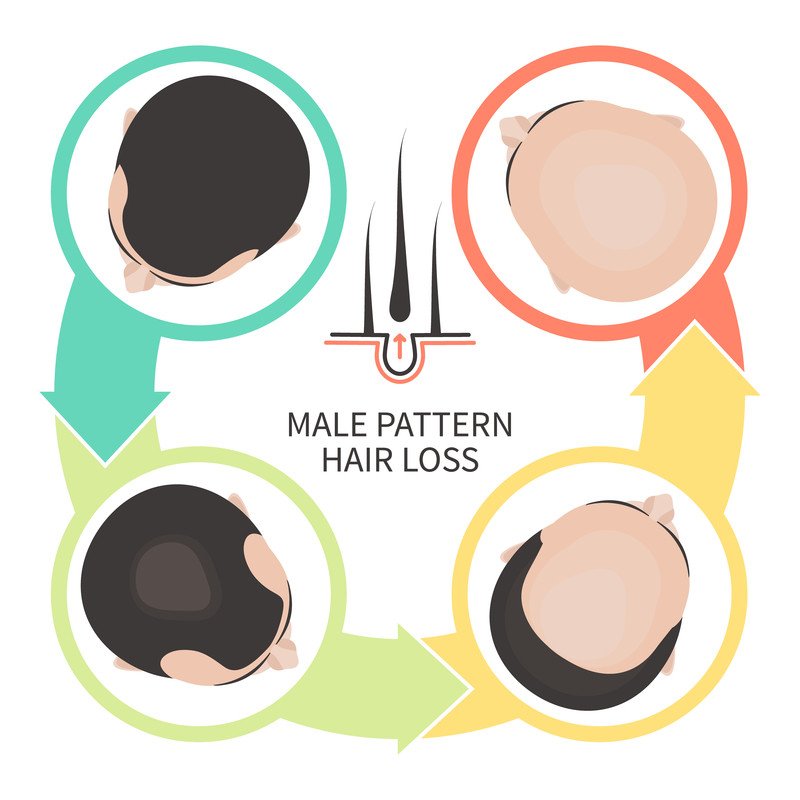Table Of Content

This usually isn't noticeable because new hair is growing in at the same time. Hair loss occurs when new hair doesn't replace the hair that has fallen out. Male-pattern baldness typically appears first at the hairline or top of the head.
What are some tips for dealing with hair loss?
If you’re experiencing hair loss, it can come on suddenly. Alopecia areata commonly causes round, smooth patches of baldness on the scalp, eyebrows, or legs, Dr. Fusco says. Total hair loss on the head is known as alopecia totalis, while hair loss that occurs all over the body is called alopecia universalis.
Can Hard Water Cause Hair Loss? Here's What the Experts Say - InStyle
Can Hard Water Cause Hair Loss? Here's What the Experts Say.
Posted: Fri, 10 Nov 2023 08:00:00 GMT [source]
Women and Hair Loss: Causes
Constantly pulling the hair into tight styles can lead to hair loss called traction alopecia. This is when tight braids or ponytails pull the hair out and damage the hair follicle. Continuously coloring, perming, chemically relaxing, or heat styling can also damage hair and lead to hair thinning or loss.
What are the signs of hair loss in women?
Female pattern baldness is largely genetic, affecting hair along the top of a woman’s head. Chemotherapy, certain other drugs and radiation treatments can prompt hair loss, mainly in the growth phase. It is typically temporary (unless the follicles are damaged). Sometimes hair loss is a sign of a condition called hyperandrogenism, which happens when your body makes too many androgens (male hormones).
Hair loss treatment
These medications affect people differently and may not cause hair loss in everyone. Learn more about the medications that can cause hair loss. Menopause can also lead to uncomfortable systemic symptoms such as night sweats, weight gain, and vaginal dryness, which may raise your overall stress levels.
This typically occurs two to three months after your protein intake dips. Seborrheic dermatitis causes the scalp to shed its skin, so you’ll notice greasy, yellowish scales on your shoulders or in your hair. It may be the result of yeast called Malassezia, hormonal changes, or excess oil in the skin. Scalp psoriasis, an autoimmune condition that causes excessive skin cell turnover, produces a very thick white scale that can bleed if pulled off. As many as five million women in the United States suffer from polycystic ovary syndrome (PCOS).
How Menopause Affects Your Hair and Scalp - The New York Times
How Menopause Affects Your Hair and Scalp.
Posted: Mon, 07 Aug 2023 07:00:00 GMT [source]
This article looks at what happens when hair falls out excessively, why this can occur, and where to seek treatment. Stay away from potentially aggravating ingredients, like alcohol, and drying heat tools. In a lot of cases, hair will grow back when you stop taking the medication. So what exactly is it that can lead to clumps of hair falling out? Well, there are plenty of potential culprits, and some people may have more than one issue at play. If you are experiencing serious medical symptoms, please see the National Library of Medicine’s list of signs you need emergency medical attention or call 911.
Hair loss symptoms
To understand hair loss, you need to understand hair growth. Believe it or not, normal hair loss is shedding 50 to 100 strands per day, as part of the natural renewal process, according to the American Academy of Dermatology. Tell them if your hair loss is affecting your wellbeing, and ask what treatments are available.
Treatment for hair loss
This is the name for hair loss caused by medications that harm your hair follicles. Radiation and chemotherapy treatments for cancer can be toxic to follicles, causing your hair to fall out within the first few weeks after you start treatment. Hair regrowth usually begins within a few months after you finish treatment. The most common cause of hair loss in women is female-patterned baldness (androgenetic alopecia). OTC medications may help reduce hair loss and promote growth. Other types of hair loss may involve treating the underlying cause.

Hair grows on almost all of your skin surfaces — not the palms of your hands, soles of your feet, lips or eyelids. In many cases, a person’s hair will return to its usual state once a doctor has treated the underlying condition. Some people may choose to use a scalp concealer, hair topper, or other product to cover hair loss.
Postpartum hair loss is typically the most noticeable after four months, but hair often grows back to its usual thickness in a year. Both men and women develop this type of hair loss, which is the most common cause of hair loss worldwide. Regardless of whether it develops in a man or women, the medical term is androgenic alopecia.
“It’s important to have a discussion with your doctor to find the right treatment,” says Dr. Khetarpal. And in the case of alopecia, the sooner you start, the better. “The longer the hair is gone, the harder it is to get back,” she says. Hair loss can be a side effect of anemia (low iron levels). It can also be caused by shortages of other nutrients, including B vitamins and vitamin D.
A doctor or dermatologist can help determine what’s causing your hair loss and recommend a treatment plan based on your medical history and symptoms. Having an infection on the scalp can cause mild to severe hair loss. Tinea capitis, or fungal ringworm, is a type of fungal infection that causes hair loss. The fungus attacks hair follicles and hair shafts on the scalp, and sometimes, the eyebrows, and eyelashes.
It is worth noting that this method is unlikely to benefit or help people with scarring alopecias. If ringworm does not heal by itself, a doctor may prescribe an antifungal medication such as griseofulvin. Treatment for this condition depends on the cause but may include a topical solution of minoxidil (Rogaine). There are multiple reasons (including physical and psychological) that can cause you to shed more hair than usual. You'll soon start receiving the latest Mayo Clinic health information you requested in your inbox.













